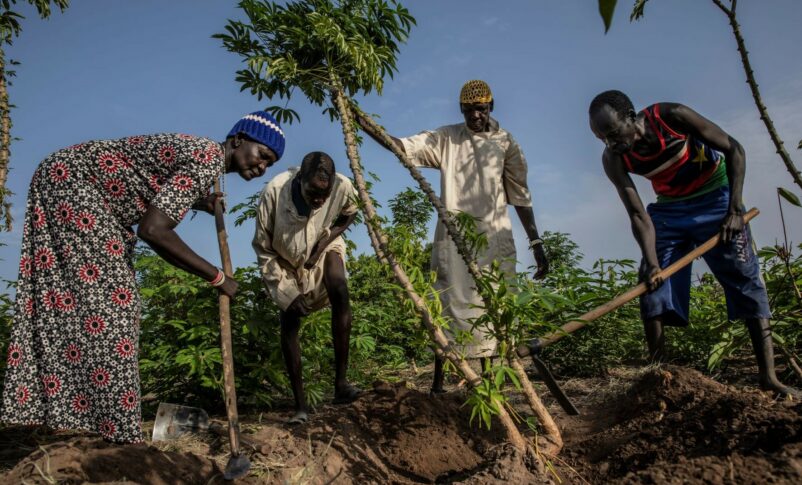November 3, 2022 (JUBA) – Hunger and malnutrition are on the rise across the flood, drought and conflict-affected areas of South Sudan, with some communities likely to face starvation if humanitarian assistance is not sustained and climate adaptation measures are not scaled-up, says a new report.
The Integrated Food Security Phase Classification (IPC) was released by the World Food Programme (WFP), Food and Agricultural Organisation (FAO) and UN Children Fund (UNICEF) on Thursday.
According to the report, about 7.76 million people are likely to face acute food insecurity during the April-July 2023 lean season while 1.4 million children will be malnourished.
“The Food and Agriculture Organization of the United Nations (FAO), the United Nations Children’s Fund (UNICEF), and the United Nations World Food Programme (WFP) warn that the proportion of people facing high levels of food insecurity (IPC Phase 3 [crisis] or above) and malnourishment is at the highest level ever, surpassing levels seen even during the conflict in 2013 and 2016,” reads the joint statement.
The decline in food security and the high prevalence of malnutrition is linked to a combination of conflict, poor macroeconomic conditions, extreme climate events, and spiraling costs of food and fuel.
At the same time, according to the report, there has been a decline in funding for humanitarian programs despite the steady rise in humanitarian needs.
“We’ve been in famine prevention mode all year and have staved off the worst outcomes, but this is not enough,” said Makena Walker, Acting Country Director for WFP in South Sudan, adding “South Sudan is on the frontlines of the climate crisis and day in, day out families are losing their homes, cattle, fields, and hope to extreme weather. Without humanitarian food assistance, millions more will find themselves in an increasingly dire situation and unable to provide even the most basic food for their families.”
The UN said that the unprecedented, multi-year flood sweeping the country is exacerbating already high levels of hunger caused by ongoing conflict and the global food crisis. Central parts of the country, which are the most heavily impacted by multiyear flooding, are the areas with the highest levels of food insecurity.
“Livelihood support is particularly needed to facilitate South Sudan’s self-reliance in food production. We know the potential exists as about 840 000 tonnes of cereals were produced in 2021, during a difficult year with climate change, floods, conflict, and other factors. With the current cereal deficit of 541 000 tonnes, urgent investment in rural livelihoods is needed to increase production and self-sufficiency,” said Meshack Malo, FAO Representative in South Sudan.
The joint statement said that while there have been marginal improvements in food security across some parts of the country, the nutrition crisis across South Sudan is deepening. All counties except one are showing a deterioration in their nutrition situation through June 2023, including 44 counties where the situation is deemed critical.
“Over the past three years, floods have dramatically affected an increasing number of people across South Sudan,” said UNICEF Acting Representative in South Sudan Jesper Moller.
Meanwhile, Sara Beysolow Nyanti, the United Nations Resident and Humanitarian Coordinator for South Sudan said that the IPC report is the product of months of data collection and analysis, with participation from government, UN agencies, NGOs and other partners.
“Quality data like this is critical to formulating humanitarian response plans to help meet the needs of people in the country, and these figures show the people of South Sudan need support more than ever,” said Nyanti “It is vital we receive commitments from donors for 2023 so we can prevent a worsening of the humanitarian situation across the country.”
According to the report, there will be 7.76 million people facing severe acute food insecurity during the April-July 2023 lean season, including a projected 2.9 million on the brink of starvation (IPC Phase 4) and another 43,000 who are expected to be living in Catastrophe (IPC Phase 5) acute food insecurity.
(ST)




